The Port Aransas Skiff, or Port A Skiff as it is known, has been serving its namesake seaside community for well over a century—before either the town or the boat even had that name. Although the pass between San José and Mustang islands connecting the Gulf of Mexico with Corpus Christi Bay was named Aransas Pass by the 1830s, the town at the entrance of that pass wasn’t called Port Aransas until about 1910.
Skiffs built along the Texas coast in the early days differed depending on the conditions at each port or bay and the uses the skiffs were put to, so the various skiff designs were often referred to by the names of those locations. Some boats, however, took on names of unique design aspects, such as Port Mansfield’s long and narrow “Banana Boats” with their pronounced forward rise, or the names of those who built them, such as the “Bubba Skiff” version of the Port A Skiff.
The Port A Skiff was originally made of solid planks and sailed or rowed into the flats and shallows on the bay sides of San José and Mustang islands for duck hunting, crabbing, or using gillnets or trotlines. As workboats to bring heavy loads of fish home to both table and market, they were built stout enough to take a beating. The boats had rocker both forward and aft then, though with transom sterns, and their oars were about twice as long as the boat’s beam. Tholepins were often used instead of less economical oarlocks.
Starting in the 1880s, when the tarpon sportfishing industry took off in the area, the boats were also used to row clients out along and beyond the original Aransas Pass jetty to the islands’ gulf sides. Although tarpon are not particularly palatable, they fight hard, leap from the water with brilliant sunlit flashes of silver-dollar-sized and -colored scales, and can reach masses rivaling those of the people catching them. They can be so large, in fact, that landed ones sometimes drape across both gunwales of the boats, head hanging toward the water on one side and tail on the other.
The Port A Skiff’s life as a tarpon boat ended by the 1920s, after Farley Boat Works opened in Port A and began building open-cockpit 16- to 28-footers with inboard engines specifically designed to take clients out for tarpon. The Port A Skiff continued to be used in the flats and bays, however, where the powerful inboard boats could not go, and indeed, once the tarpon population precipitously declined in the 1960s, the skiffs survived while the inboard tarpon boats did not.
The Port A Skiff was arguably the perfect boat for a coastal fishing town, easily built of common materials, handy under oar and sail, capable in local conditions, and simple and easy to maintain. They were designed and built locally, often on the beach or in a backyard, and have evolved alongside the inception of plywood and affordable outboards and the passage of legislation outlawing gillnets and otherwise limiting commercial fishing in the bays. Most notably, the skiff’s transom widened and its aft rocker flattened to support the weight of outboards and get on plane. The modern Port A Skiff is primarily a recreational boat used for duck hunting and for fishing for red drum, speckled seatrout, and flounder.
Many builders have contributed to the Port A Skiff’s evolution, not only with adaptations for incorporating plywood, fiberglass, and outboards, but also with personal touches. The first modern Port A Skiff was likely built around 1960 by John “Bubba” Milina Jr., a local fishing guide who built boats from the 1940s until shortly after the turn of the 21st century. In his younger years he sometimes visited Farley Boat Works to watch them build boats. The most famous version of the Port A Skiff, however, is likely the School Skiff, built from the late 1970s until about 1990 by the local high school shop class under the guidance of “Coach” Doyle Marek, who based his boats on Bubba Milina’s. Many of Coach Marek’s students, now adults, still have their skiffs.
In an interesting turn of events, after closing in 1973, Farley Boat Works reopened in 2011 as a nonprofit with the goals of preserving the historic shop and its surviving boats and teaching traditional local boatbuilding, and it is now where the Port A Skiff is almost exclusively built, at its Rick Pratt School of Wooden Boat Building. One of the shop’s first orders of business upon reopening was to invite Coach Marek to teach their volunteers how to build the Port A Skiff and ensure that the knowledge and skills necessary could be passed to yet another generation of boatbuilders.
Individual builders differed in opinion on subtle details, such as the exact shape of the stern or whether the splash rail should parallel the sheer or the chine. Someone with an educated eye can identify a Bubba Skiff, a School Skiff, or other variations of the Port A Skiff from such details.
The boat is not made from a set of plans or on a strongback—unless you consider the floor at Farley Boat Works a strongback—but from a few flexible measurements and experience and by eye, tweaked to suit the individual boat’s intended purpose. All the boats, however, stem from a single free-built system using two 16ʹ lengths of scarfed plywood, with one split into two 2ʹ-wide lengths for the boat’s sides and the second left 4ʹ wide for the skiff’s bottom. Mahogany is usually used for the stem, chine rails, gunwales and inwales, spray rails, and other framing; treated pine for the keel and keelson; and additional plywood for the transom, bow deck, center dry box, and rear seat.
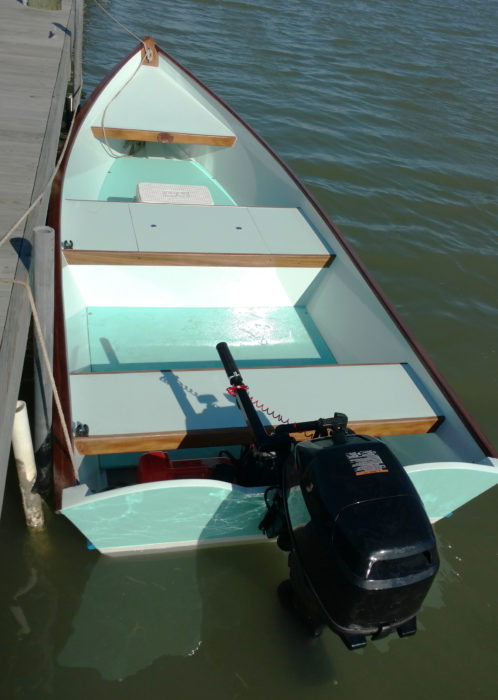 Harry Martinez
Harry MartinezThe floorboards are made of 1/2″ plywood and are supported by the chine logs only, which allows the bottom of the boat to flex. A few screws and finish washers hold the floorboards in place and can be removed to get access to the bottom.
The side panel ends are cut at predetermined angles. The sheer is cut along a curve and the bottom remains straight. The sides are glued and screwed to the stem and then to the transom. The rake of the stem and transom rarely vary from boat to boat, and the straight rabbeted stems are crafted to create ample beam and buoyancy forward and still allow the boats to be built within the dry-bending limits of plywood.
A temporary stretcher frame pushes the tops of the sides out, giving the bottom its rocker and the sides their flare. Move the frame forward, and you get more rocker there and a flatter stern. The bottom edges of those sides should sit flat on that workshop floor from the transom to about half to two-thirds of the boat’s length going forward. The sides’ flare should create a beam of no more than 5ʹ 5ʺ, and the forward rocker should leave a 6ʺ to 9ʺ gap between the workshop floor and the forefoot.
Some builders choose to shorten the boat’s length to 14ʹ or stretch it to 18ʹ or widen the bottom from 4′ to 5ʹ, by adding a 6″-wide strip of plywood on either side. The bottom should not be widened more than that because it’s designed as a “floating bottom” that flexes when underway.
Another dimension some builders decide to veer from is the 20ʺ to 24ʺ height of the sides. This height, combined with the flare and splash rails, provides a bone-dry ride in most conditions. Lower sides, however, are an advantage for flounder fishing, which involves repeatedly stepping out of and back into the boat at night to wade with a multipronged spear and spotlight while trailing the boat by its painter. Poling and fly-fishing can also benefit by adjusting the sheer height to balance windage and prevent weathercocking while sneaking up on red drum.
In the earlier days of planing Port A Skiffs, a hook was added on the bottom at the stern to help keep the bow down when motoring. This could be achieved after fiberglassing the bottom, with a few additional layers of ’glass aft, each layer starting at the transom then ending several inches less than the previous one to build up the subtle hook. Or it could be achieved after the hull is turned bottom side up but before the bottom itself is added, by cutting a bit of a curve into the chine edges of the sides aft. Modern skiffs may leave the bottom flat aft and control the boat’s trim with trim tabs and the outboard’s trim function, which have the advantage of being able to impart the effect of a hook only when needed.
The standard Port A Skiff is a flat-bottomed boat and as such can pound in a chop, and the shallow waters around Port A ensure that pretty much any wave action comes in the form of a chop. Experienced skippers ease their speed and adjust their trim and angle of attack into the waves to make it a less bumpy ride. Although the boat’s splash rails, outer gunwale, and flaring sides keep the cockpit dry in most conditions, trying to nose the bow down too far in a chop can turn it into a wet ride, particularly with the lower freeboard of a poling or floundering version of the boat.
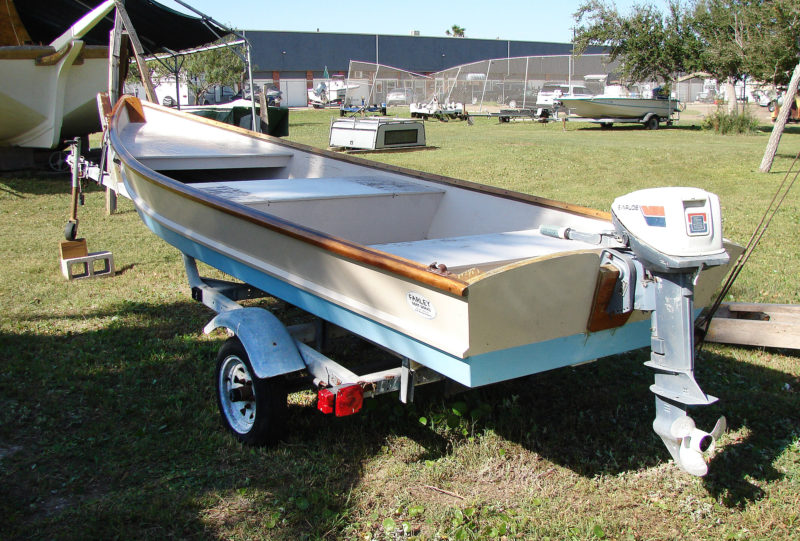 Roger Siebert
Roger SiebertHull number 2 is a basic model with seating in the bow and on two thwarts. The center thwart is supported by a pair of bulkheads and the enclosed space is accessed by a flush hatch.
Interior layout is one area of great variability, with some relying on an aft thwart and tiller, while others add console-mounted steering and controls to move the skipper’s weight forward and to absorb the impact of any particularly bad chop with the skipper’s legs instead of with jarred teeth and spines. Some owners also keep their fuel tanks beneath the foredeck to help with balance.
As another tactic to reduce pounding, recent builds of the skiff have added some V to the bottom, first in what can be considered the second generation of the modern Port A Skiff, adding the V only forward, where the bottom’s forward rocker is, but also more recently, in the boat’s third generation, all the way aft—albeit an extremely shallow V aft of the rocker to prevent losing one of the skiff’s greatest assets: its shallow draft.
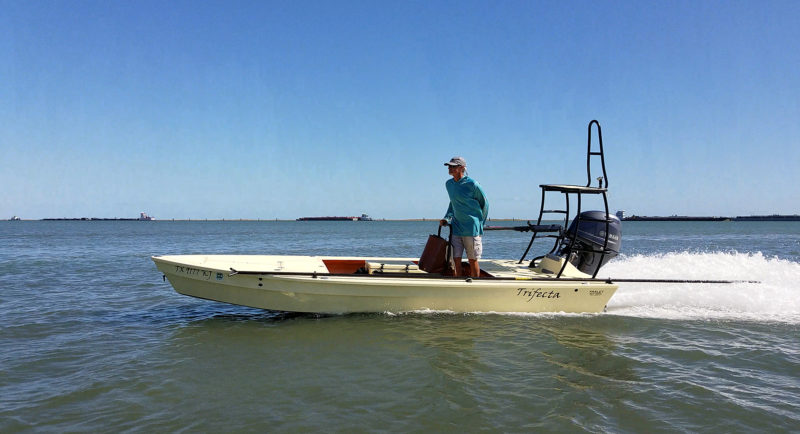 Roger Siebert
Roger SiebertTRIFECTA is a well-appointed contemporary Port Aransas skiff. The center console is equipped with instrumentation and a handhold. The outboard is operated with a tiller in the same manner as older skiffs, but with a much larger outboard.
The standard 16ʹ × 4ʹ Port A Skiff can plane with two people aboard with a 20- to 25-hp propeller-driven outboard. One problem with skinny waters, though, is that propellers and flats tear each other up. It’s troublesome and costly to constantly replace props and torn-up flats disturb an ecosystem that has historically provided boat loads—literally—of the very fish many recreational boaters are in search of.
Second- and third-generation Port A Skiffs minimize this problem with a tunnel in the bottom aft, a recess that raises the midpart of the bottom of the transom and allows the outboard to be set higher. Or a boater can go even further and eliminate the prop and skeg entirely by opting for a jet-drive outboard. The aptly named TRIFECTA, the prototype third-generation poling version of the Port A Skiff, incorporates both. Without that skeg or the standard Port A Skiff’s 1ʺ × 6ʺ keel, though, the boat can tend to slide sideways during turns, so reducing speed and extra care while turning is in order.
With the load properly balanced and the outboard shut off and lifted or trimmed to raise the prop and skeg, the Port A Skiff can be poled in as little as 6ʺ of water. With a tunnel or jet drive, a skiff can cruise in close to the same depth and plane across even less. In fact, if the skipper’s not careful, the boat can come off plane in water shallower than it needs to get moving again. If that happens and the boat has that shallow V in the bottom, it can be heeled to float on either of its flat bottom panels and slowly accelerate in a tight circle until the boat lifts itself enough to get moving in a straight line again.
 Roger Siebert
Roger SiebertThe tower in the stern provides a perch for poling and a better view of the fishing grounds. The outboard is equipped with a jet drive that adds little to the draft and isn’t bothered much by hitting bottom.
There is another price to pay for a tunnel or jet propulsion, in the loss of some efficiency, requiring more horsepower to get to the same speeds, but adding transom extensions can provide the necessary additional buoyancy to compensate for the added weight of a more powerful outboard.
Lighter stitch-and-glue plans and CNC kits for the Port A Skiff have been on Farley Boat Works’ wish list for some time, but in 2017 Hurricane Harvey destroyed their initial notes, and then the pandemic delayed restarting those plans. At present, the options for someone not already intimately familiar with the boat to build one is to use the manual from Farley Boat Works for the standard 16ʹ × 4ʹ version or to go to Port A and get started on the boat in their shop. The hull can come together in only a few days, and after ’glassing and painting the bottom, the hull can be trailered home for fitting out and finishing.
Building a Port A Skiff at Farley Boat Works has many advantages. For the cost of materials and about $100 a month, a boatbuilder gets ample space inside the shop for the project and access to the shop’s tools and, if desired, the guidance and assistance of the experienced volunteer staff. And in the process, you support Farley Boat Works and its parent organization, the nonprofit Port Aransas Preservation and Historical Association.
The Port A Skiff is actually many skiffs, its current generation only one of a long, still-evolving line of craft serving just as many purposes and served by just as many builders. It is a time-tested, highly adaptable boat that can take you into the skinniest of water, where you can hook or gig the same fish that the flats and bays have provided Port Aransans for nearly two centuries.![]()
Roger Siebert is an editor in Austin, Texas. He rows and sails on local lakes and trailers to the Texas coast when he can.
Port Aransas Skiff Particulars
Length: 16′ to 18′
Beam: 5′ to 6′
For more information about the construction manual and arrangements to build the Port Aransas Skiff at Farley Boat Works, contact Ashley Harris, the Executive Director for the Port Aransas Preservation and Historical Association with oversight of The Farley Boat Works and The Port Aransas Museum and Maritime Museum. She can be emailed at [email protected]
Is there a boat you’d like to know more about? Have you built one that you think other Small Boats Magazine readers would enjoy? Please email us!
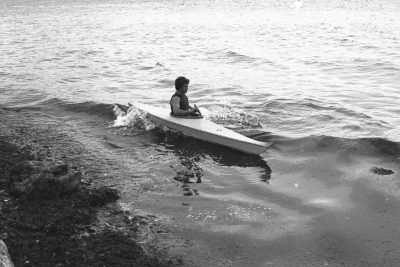
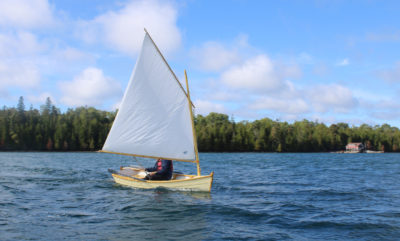
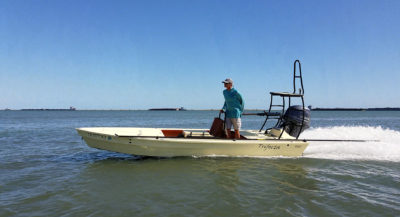
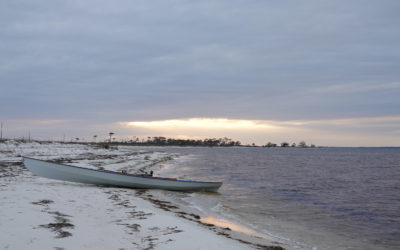
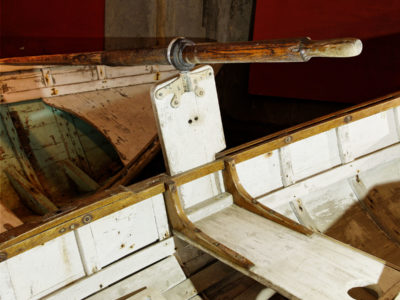
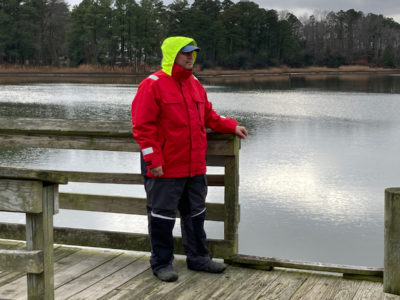
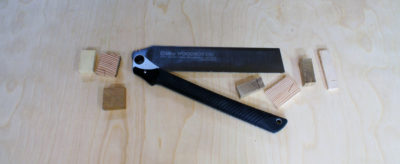

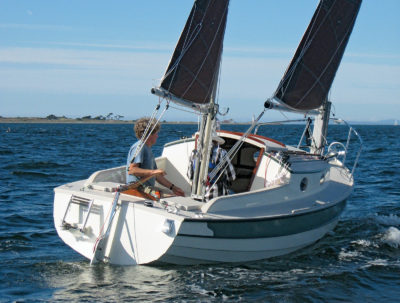
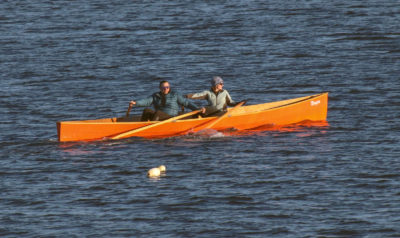
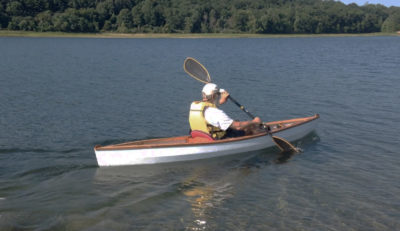
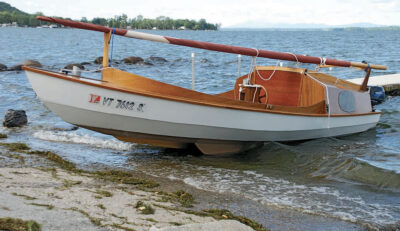
Great boats, from Skipper’s South Padre Island stomping grounds. Nice purpose-built design for the many lagunas and mudflats in the area, which are full of interesting aquatic and airborne animals.
Thinking these’d do well on the Chesapeake Eastern Shore.